The current trend toward fast, byte-addressable non-volatile memory (NVM) with latencies and write resistance closer to SRAM and DRAM than flash positions NVM as a possible replacement for established volatile technologies. While on the one hand the non-volatility and low leakage capacity make NVM an attractive candidate for new system designs in addition to other advantageous features, on the other hand there are also major challenges, especially for the programming of such systems. For example, power failures in combination with NVM to protect the computing status result in control flows that can unexpectedly transform a sequential process into a non-sequential process: a program has to deal with its own status from earlier interrupted runs.
If programs can be executed directly in the NVM, normal volatile main memory (functional) becomes superfluous. Volatile memory can then only be found in the cache and in device/processor registers („NVM-pure“). An operating system designed for this can dispense with many, if not all, persistence measures that would normally otherwise be implemented and thereby reduce its level of background noise. Considered in detail, this enables energy requirements to be reduced, computing power to be increased and latencies to be reduced. In addition, the elimination of these persistence measures means that an „NVM-pure“ operating system is leaner than its functionally identical twin of conventional design. On the one hand, this contributes to better analysability of non-functional properties of the operating system and, on the other hand, results in a smaller attack surface or trustworthy computing base.
The project follows an „NVM-pure“ approach. A threatening power failure leads to an interrupt request (power failure interrupt, PFI), with the result that a checkpoint of the unavoidable volatile system state is created. In addition, in order to tolerate possible PFI losses, sensitive operating system data structures are secured in a transactional manner analogous to methods of non-blocking synchronisation. Furthermore, methods of static program analysis are applied to (1) cleanse the operating system of superfluous persistence measures, which otherwise only generate background noise, (2) break up uninterruptible instruction sequences with excessive interruption latencies, which can cause the PFI-based checkpoint backup to fail and (3) define the work areas of the dynamic energy demand analysis. To demonstrate that an „NVM-pure“ operating system can operate more efficiently than its functionally identical conventional twin, both in terms of time and energy, the work is carried out with Linux as an example.
